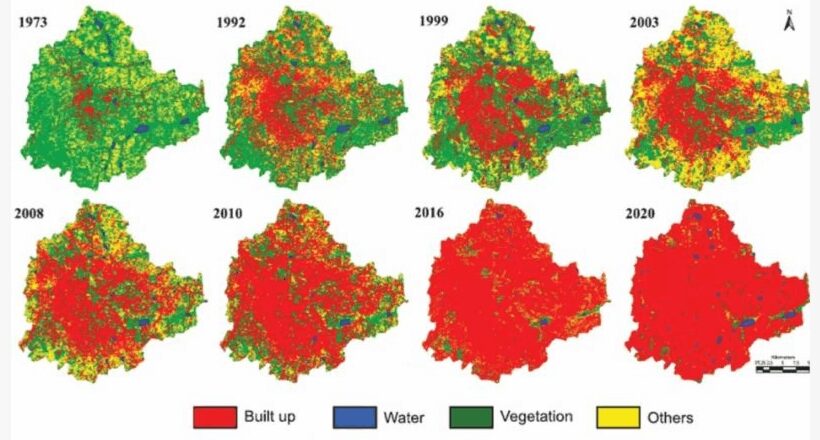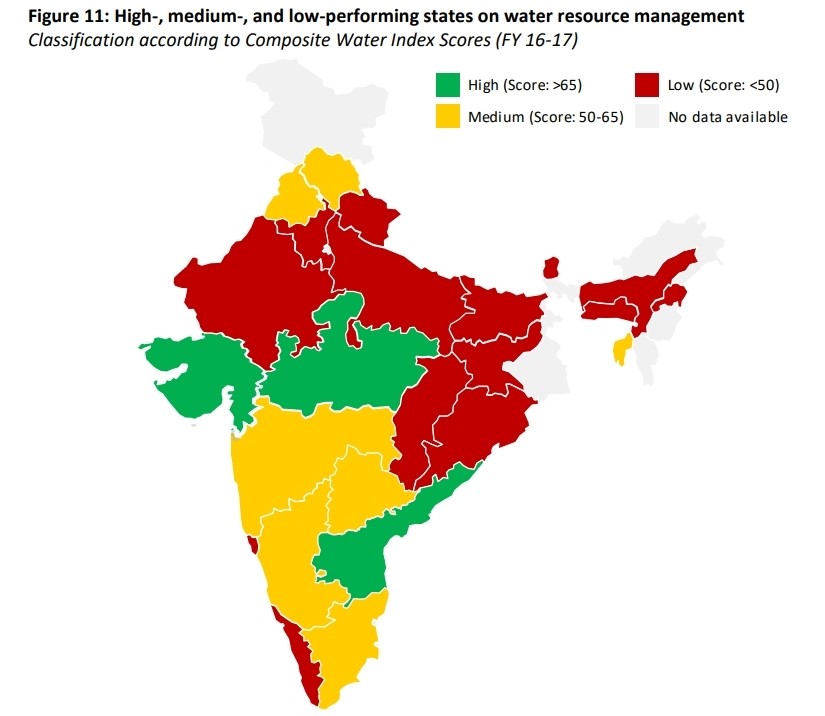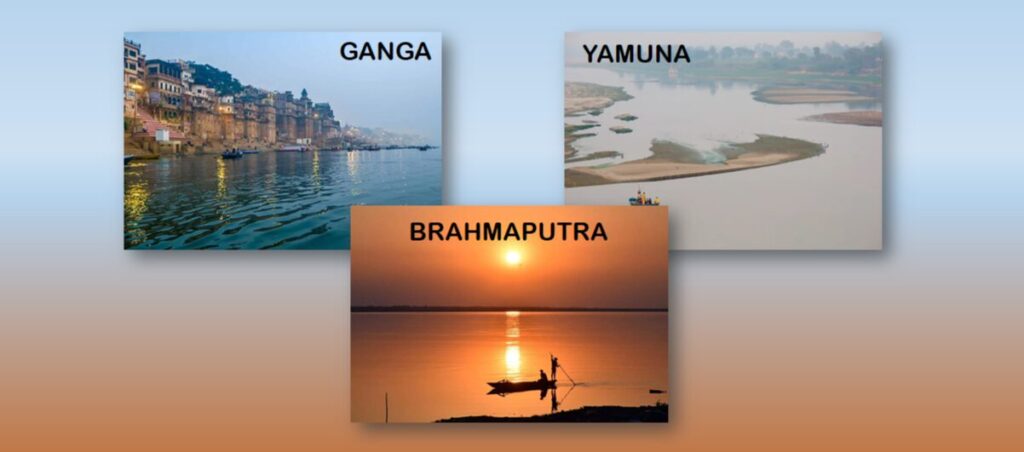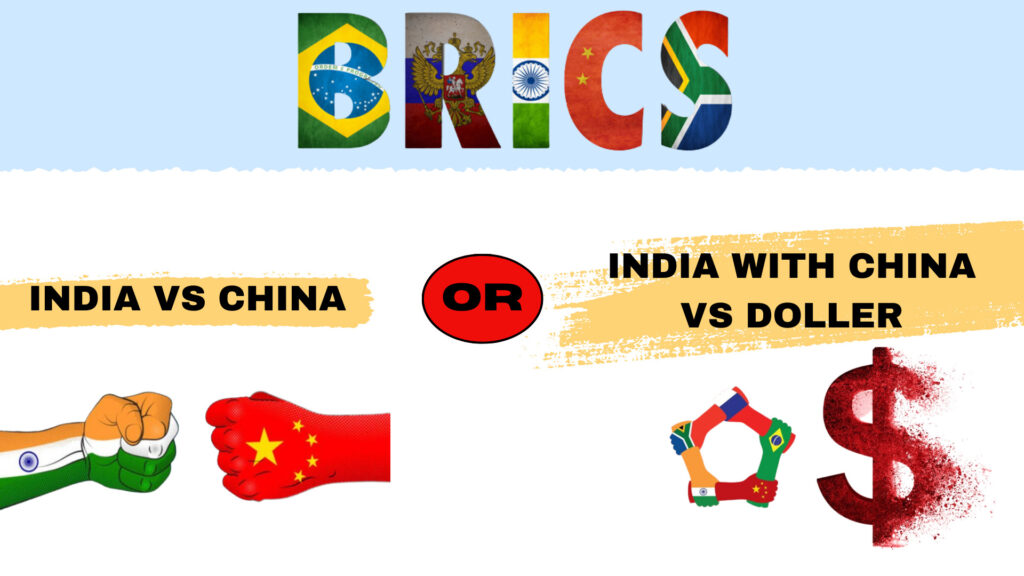Water Crisis in Bengaluru is a major problem that requests, By carrying out arrangements like water collecting and saving water strategy. Following grey water recycling policy also think about India’s water future.

Bengaluru has run out of water! The issue is serious to the point that individuals are leaving Bengaluru. Ground water, which was available at 100ft levels prior, isn’t available now even subsequent to digging 1800 ft. Bengaluru’s story is an warning for India That on the off chance that we don’t handle this emergency, then our country’s future will be in grave danger This point is quite serious You should think, we should not skip it.
We do have water today But having water today is not a guarantee that we will have water in the future! Tomorrow, you may get water only for an hour and you might have to face water cuts That’s why read this topic carefully so that you can save yourself and a water crisis.
How Bad Situation In Bangaluru ?
Bengaluru is India’s Silicon Valley, startup and IT hub. In 2024, news broke out that Bengaluru is running out of water! The problem is that Bengaluru’s water supply is quite broken. 70% of bengaluru’s water needs come from the Kaveri river and the rest is fulfilled by ground water The problem is that ground water is getting pumped out but this water isn’t getting replenished.

This Bengaluru’s image has become quite viral. In Bengaluru, the number of urbanization, i.e… concretization, buildings, roads, has increased by 1000% But the number of water bodies has reduced by almost 80%. India’s major cities are flooded every year during the monsoons and this is a man-made disaster. On the other hand, Bengaluru’s water crisis is also completely a man-made disaster because to develop the city, The Bengaluru masterplan was made new buildings were built. IT parks were built to enhance the IT industry but the land is limited. So how did all of this happen? By reclaiming water bodies, by cutting down trees When an area develops, population increases, then water needs also increase but there is no planning about it.
There is no discussion about it. When a building gets construction permission, then from where will the residents get water? By law, it has been said that in Bengaluru, rainwater harvesting is mandatory but if this law was actually implemented then perhaps this problem would not have occurred in Bengaluru today. And since 70% of Bengaluru’s water comes from the Kaveri river, it is very much dependent on monsoons If the monsoons are good, then water will replenish in the river but if the monsoons are deficient, or there is a possibility of drought, then its direct impact will be on Bengaluru and its residents The biggest problem of Bengaluru is that the existing water bodies have been encroached. They have been used for property development by filling the lakes with mud because of all this, the groundwater levels have got affected and during excess monsoons flooding also happens.
India’s Water Future And Resource Management
In 2018, Niti Aayog published the ‘Composite Water Management Index‘ In which they made a water index on India’s water resources, their availability and water scarcity On the first page of that report, it is written that 60 crore people live in extreme water stressed areas. Every year, 2 lakh people lose their lives because they do not get clean and safe drinking water. And do you know how much loss we face due to this water shortage? 6% of our GDP and that is huge. To put things in perspective, every year we spend 2% of GDP on healthcare and 3.5% of GDP on education and the problem is that as India will keep growing, our water needs will also increase. More number of apartments will be built, people will consume more water and for all this, India has no concrete plan.

‘Composite Management Report’ If you look carefully, the states from which the Ganga river flows those states have done the least water management and preparation. This water scarcity has a multi-level impact For example, how will we farm without water? How will we grow the same crops every year? People get polluted water which causes health problems thus reducing the overall quality of life. Those who can afford water tankers, their point is different but those who do not have money, will they get water? In what condition will they get it? Will it be drinking water? Who knows? It is important to think about all these issues Water shortage has a deep connection with food security. Unfortunately, India produces and exports high water intensity crops like rice and sugarcane with these, we compromise our water security.
Which means our government knows about it, But they do not take action on it. Even if a policy is made, it does not get implemented properly! But until we talk about these issues, we will keep exporting our water to the world. India produces excess sugar. We keep buffer stocks of sugar and also export it. Not because it is profitable, but because prices can crash due to overproduction We produce so much excess sugarcane that we are producing ethanol from it India’s 62% water needs comes from groundwater and there is also an issue of water stress India still runs on majorly thermal power. Thermal power plants are heavy water consumers Due to this water shortage, our electricity production will also be impacted. We will be able to produce less power than our potential.
Bengaluru Water Crisis Solution

The water crisis and Bengaluru situation is a warning sign for India There is still time If you take the right step now, then you will be able to save the country. There are many ways to tackle the water shortage and water crisis at an individual level and at a policy level but it is also necessary to implement them because as India is getting industrialized and urbanized, we will have to think about the water needs.
The first step is to stop pretending that water is unending. India does not have unlimited and infinite water Rivers like Ganga, Yamuna and Brahmaputra are glacier fed As the glaciers will melt, the water levels will increase But in the future, these levels will decrease when there will be no glaciers India represents 16% of the world population but has less than 4% of the total water. This means that we will have to conserve every drop of water, there is no choice.
Save Water Step 1: Reuse
Remember one thing reuse. If you can use water multiple times, then your water demand can be sharply reduced For example, collect AC water and then use it for flushing. The water that was going to go waste, now gets used for flushing So by this way overall water demand is reduced. You can reuse your kitchen water, You can use it to water your plants, You can reuse the washing machine water for flushing. Let me share with you a personal example I have RO at home and I use this RO water 3 times. Whenever the water is filtered, I collect the remaining water in a bucket and use the same bucket of water for cleaning, Then I use the grey water for flushing. The water that could go into the drain, the same water cleans the floor, And the same water is used for flushing. With this one small action, I can save on and average 20 ltrs of water in one go At a society level.
Save Water Step 2: Use Water Converters
Water Converters which fits in your taps, reducing the water flow This converts water into high stream jets. which reduces water consumption and there is no compromise in cleaning, You can fit this in every tap.
Save Water Step 3: Rainwater Harvesting
For rainwater harvesting pits will capture the rain in the monsoon and will recharge the borewell of your building and these rainwater harvesting structures have another big benefit, They stop flooding. Because the water goes directly into the ground.
Both during droughts and floods I have heard that rainwater harvesting is now mandatory in new housing projects But to be honest, I am not really sure of the implementation. At a policy and government level, we should not try to hide the fact that there is a water shortage Let’s take the example of Cape Town. There were many articles stating that Cape Town will be the first city to run out of water in 2018. I read a report on how Cape Town dealt with its water shortage. The first line states that the government and the municipality did not deny that there is a water shortage They admitted that there is a water problem and we need to solve it together.
Urban development is the best way for political parties and real estate mafias to make money. Water bodies and wetlands are sold at a lower rate. Supplying water tankers is now a business but you must be aware how much water drips from water tankers If it was milk or petrol, would these be transported in such faulty trucks? The thing that is valuable, will we let that go waste like this? The answer is no.
Grey Water Recycling Policy
Everyone takes their own steps. Grey water is the water that comes from every source except toilets and recycling this means reusing this water Reusing this grey water, collecting it, treating and recycling it. National policies should be made on these Every state should have its own policies because by doing this, water will be reused and demand will decrease.
Look at this water risk atlas. India is in the extreme high risk category. what I feel is, whenever a smart city is being developed, lakes must be created! It is important to conserve wetlands and make parks out of them. Mangrove conservation is mandatory. Ultimately, we must remember that water is a gift! We cannot take it for granted. Due to climate change, India is experiencing unseasonal rains and intense rainfall in short periods. Due to this, there are flash floods in areas like Himachal every year, there are floods in many of our cities. This is a reality, Water scarcity is also a reality. The sooner we accept this reality, the sooner we will be able to think about solutions.
Conclusion :
The water crisis in Bengaluru is a pressing issue that demands immediate attention and action from both authorities and individuals. The severity of the situation highlighted in Niti Aayog’s report sheds light on the critical need for sustainable water management practices in the region. By implementing solutions like rainwater harvesting and adopting a Grey Water Recycling Policy, we can contribute towards conserving precious water resources for future generations. It is crucial for everyone to play their part in water conservation efforts to ensure a sustainable water future for Bengaluru and beyond. Let us take proactive steps today to safeguard our water sources and work towards a more water-secure tomorrow.
Also Read…
- What Is Pin Code and India Post: All The Things You Should Know About It.
- Canada’s Dirty Secret: How Canada Failed to Stop the Air India Bombing(1985) and Continues to Support the Khalistan Movement
- Top 10 Highest Paying Jobs Of The Future
- How to Sleep faster & better? Everything You Should Know About Sleep



